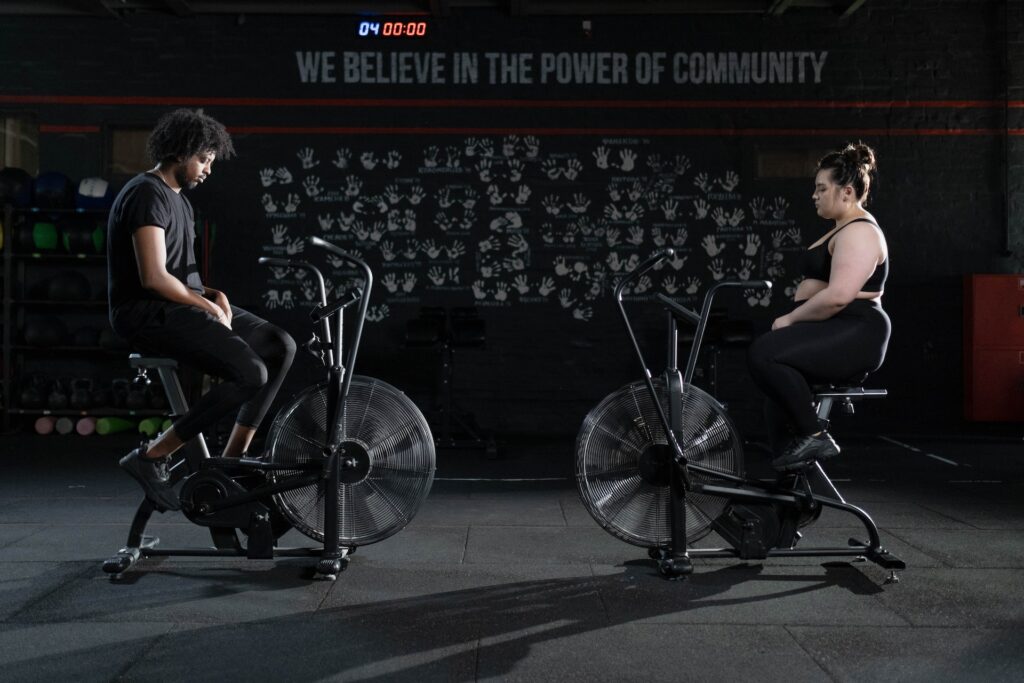
Table of Contents
ToggleAre you tired of trying different diets and exercises to achieve a slim waistline? If yes, then you might have heard about the latest trend in town- Waist training! But before jumping on the bandwagon, it’s important to educate yourself about what waist training is all about.
In this blog post, we will guide you through everything you need to know before making your purchase – from types of waist trainers available in the market to tips on how to use them safely and effectively. So sit back, relax and get ready for some serious waist training 101!
Introduction to Waist Training
If you’re considering waist training, there are a few things you should keep in mind before making your purchase.
First, it’s important to choose the right size corset for your body type. If you’re not sure what size to get, it’s always best to err on the side of caution and go with a smaller size.
Second, make sure you’re comfortable in the corset before you start wearing it for extended periods of time. It shouldn’t be too tight or constricting, and you should be able to breathe normally while wearing it. Third, start slowly with waist training and gradually increase the amount of time you wear the corset each day. And finally, listen to your body – if at any point during waist training you experience pain or discomfort, stop immediately and consult a doctor.
Benefits of Waist Training
If you are considering buying the best waist trainer for women, it’s important to know the benefits and risks before making your purchase. Waist training can have many benefits, including a smaller waistline, improved posture, and back support. However, there are also some risks to consider, such as reduced lung capacity and possible discomfort.
When used correctly, waist training can be an effective way to achieve a smaller waistline. corseting can help to improve your posture by pulling your shoulders back and keeping your spine straight. It can also provide support for your lower back.
However, there are some risks associated with waist training that you should be aware of before beginning. Corseting can constrict your lungs and make it difficult to take deep breaths. It can also cause discomfort, especially if you wear it for long periods of time or if the corset is too tight. If you experience any pain or discomfort while wearing a corset, discontinue use immediately.
Types of Waist Trainers Available
There are a few different types of waist trainers available on the market today. Depending on your goals, budget, and preferences, you may want to choose one type over another. Here is a quick overview of the most popular types of waist trainers:
1. Underbust Waist Trainer: This type of waist trainer goes from just under your bust to your natural waistline. It is typically more affordable than other types of waist trainers and is ideal for those who are new to waist training or looking to make a smaller investment.
2. Overbust Waist Trainer: This type of waist trainer goes from over your bust down to your natural waistline. It provides more coverage and support than an underbust trainer and is ideal for those who are serious about waist training or looking for maximum results.
3. Corset Waist Trainer: A corset waist trainer is a more traditional style of waist trainer that laces up in the front and often has boning throughout. Corset trainers can be worn on their own or as an added layer under clothing. They provide great support and can help give you an hourglass shape.
4. Latex Waist Trainer: A latex waist trainer is made from latex rubber and is designed to be very tight-fitting. This type of trainer will help you sweat more during workouts and may provide additional back support. However, they can be difficult to put on and take off and may not be suitable for everyone.

Factors to Consider Before Buying a Waist Trainer
If you’re thinking about buying the best waist trainer for women , there are a few things you should keep in mind. Here are some factors to consider before making your purchase:
1. What is your goal?
Are you looking to improve your posture, or do you want to achieve a smaller waistline? There are different types of waist trainers available that can help you achieve different results. Make sure you know what your goal is before making your purchase.
2. What is your budget?
Waist trainers can range in price from around $30 to $100+. It’s important to find one that fits within your budget and meets your needs.
3. What size do you need?
It’s important to find a waist trainer that fits properly. If it’s too small, it will be uncomfortable and may not provide the results you’re looking for. If it’s too large, it may not stay in place and could be difficult to use. Be sure to take accurate measurements of your waist before making your purchase.
4. What material do you prefer?
There are different types of materials used in waist trainers, including latex, neoprene, and cotton. Each has its own benefits and drawbacks, so it’s important to choose the one that’s right for you. Consider things like comfort, durability, and breathability when making your decision.
Tips for Successful Waist Training
1. Start slow – it takes time to get used to wearing a corset. If you try to wear it for too long at first, you will be very uncomfortable.
2. Don’t lace too tightly at first – again, you need to get used to the corset. Lacing too tightly will make it very difficult to breathe and could cause you to faint.
3. Wear something underneath – a corset is not designed to be worn directly on the skin. Wearing something underneath (like a chemise or tank top) will help protect your skin from the laces and boning.
4. Don’t forget the busk! – The busk is the metal or plastic strip that runs down the front of the corset and holds it together. Without it, your corset will fall apart. Be sure to check that the busk is securely fastened before putting on your corset.
5. Listen to your body – if you start to feel lightheaded or dizzy, take off the corset immediately. Corsets are not meant to be worn for long periods of time, so take breaks often.
How to Choose the Right Size and Fit
When it comes to waist training, one of the most important things to keep in mind is choosing the right size and fit. There are a few factors to consider when making your purchase:
-Your natural waist size: This is the measurement around your waist, typically at your belly button. When choosing a waist trainer, you want to make sure it’s tight enough to create a cinching effect, but not so tight that it’s uncomfortable or causes pain. If you’re unsure of your natural waist size, you can measure it with a tape measure.
-The style of the trainer: There are different styles of waist trainers on the market, from corsets to latex wraps. It’s important to choose a style that you’re comfortable wearing and that will work with your wardrobe. For example, if you plan on wearing your trainer under clothes, you’ll want to make sure it’s not too bulky or noticeable.
-The material: Waist trainers are typically made from latex or other synthetic materials. If you have sensitive skin, you may want to choose a trainer made from cotton or another natural fabric.
-Your budget: Waist trainers can range in price from $50 to $200+. It’s important to find one that fits within your budget and meets your needs.
Risks and Precautions of Wearing a Waist Trainer
There are a few risks and precautions to take before donning a waist trainer. First and foremost, consult with a physician, especially if you have any pre-existing medical conditions. Secondly, be mindful of how often you wear the garment. Wearing it for too long or too often can lead to discomfort and even organ damage. Finally, make sure the garment fits properly. Too tight of a fit can cause bruising and other issues.
Conclusion
Waist training is becoming an increasingly popular way to achieve a smaller waistline and improve overall health. While waist trainers can be a great addition to any wardrobe, there are some important factors that you should consider before making your purchase.
To ensure the best outcome with your waist trainer, make sure to choose one that fits properly, select the right material for your needs, and use it correctly. With the right knowledge and care, a waist trainer can help you reach your goals in no time!
About The Author
Sarah Williams
Sarah Williams is a seasoned editor at GambleItMayWay.com, where she brings her passion for writing and keen editorial skills to the forefront. Her expertise spans across various domains, with key areas of interest encompassing lifestyle, business, technology, and home decor.
